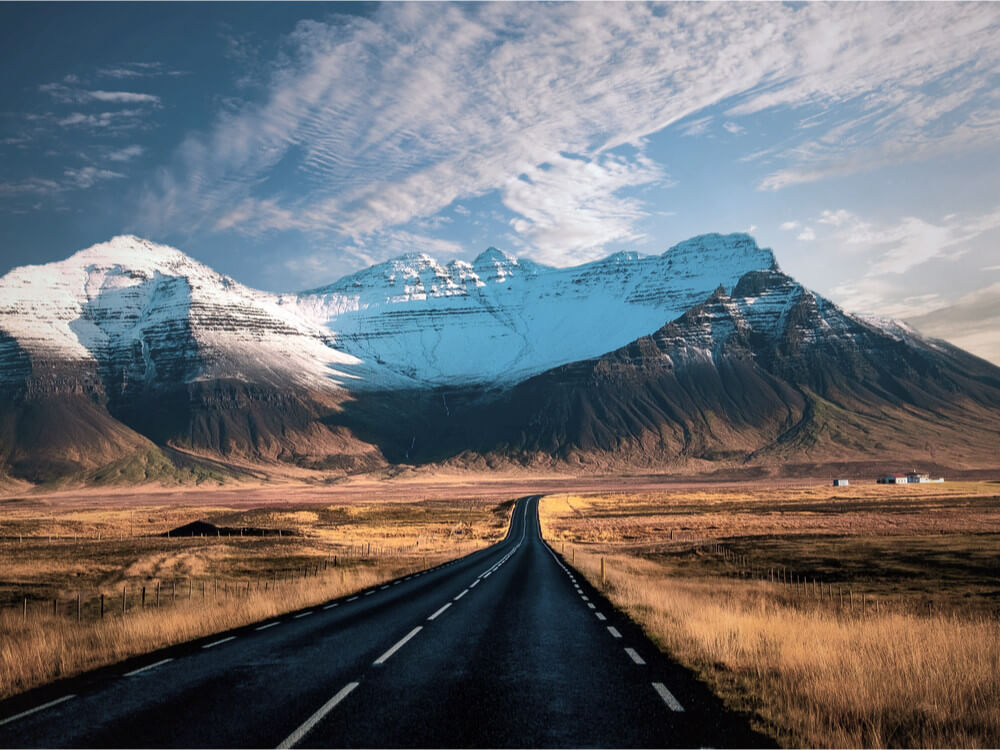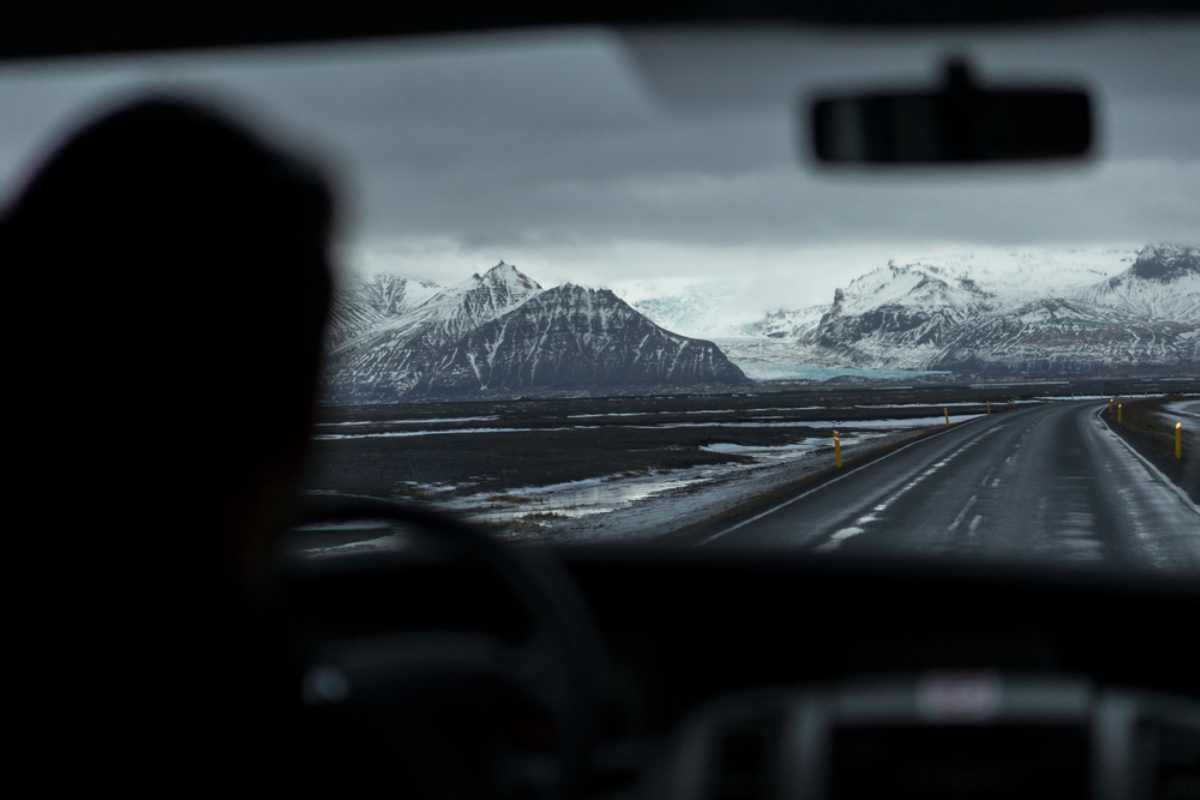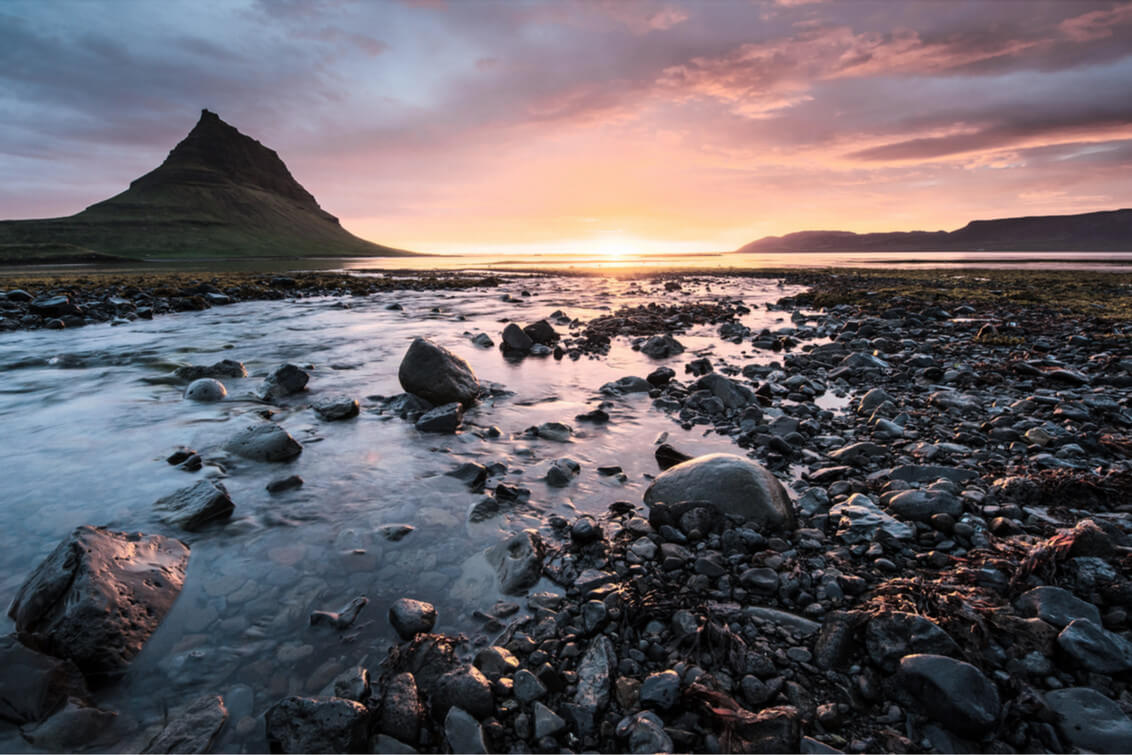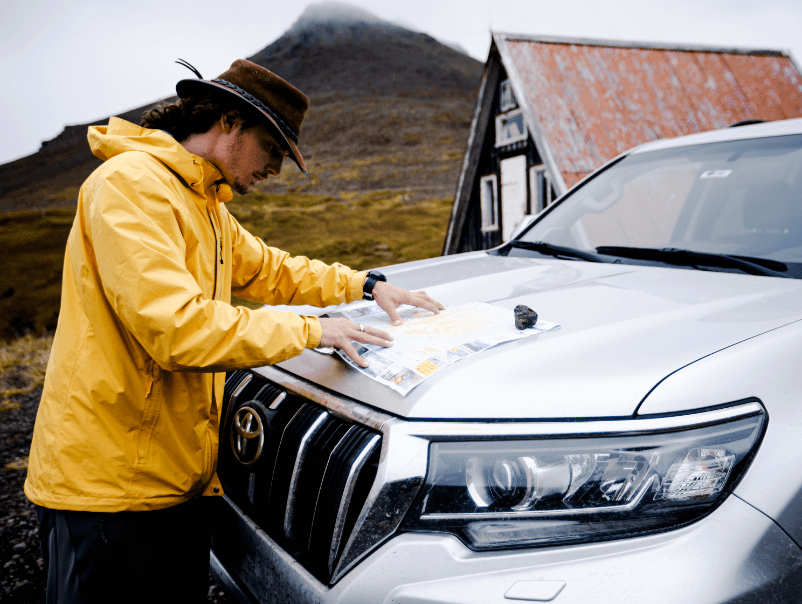Renting a camper and driving around the Ring Road is hands-down the best way to see our beautiful country. Driving in Iceland is likely unlike anything you've ever experienced before. That's because everything from road conditions to weather conditions might be entirely new and foreign to you, even as an experienced driver.
If you're planning on doing a self-drive Iceland road trip, there are several things you need to know. You probably already know the basics: drivers and all passengers must wear seatbelts. In Iceland, older kids need seatbelts, and little ones must be in proper car-safety seats. Headlights must be on at all times, and using your mobile while driving is a big no-no.
But when it comes to driving safely in Iceland, there’s more to the story. In this article, we’ll dive into extra safety tips and lesser-known details to help you navigate Iceland’s unique roads with confidence and ease.

Understanding Iceland’s Driving Laws
Just to get ourselves oriented, let's talk about some Iceland driving laws. This will help you put some things into context as well as make you aware of rules that may be different for drivers than in your country.
General Road Rules in Iceland
- In Iceland, vehicles drive on the right side of the road, and overtaking is done on the left.
- It's mandatory for all passengers to wear seatbelts, regardless of their seating position.
- Children under 135 cm (4 ft 5 in) must use appropriate child safety seats.
- Regardless of the time of day, headlights must always be turned on. This law ensures visibility during changing weather conditions.
Seatbelt and Mobile Phone Usage
- Seatbelts are mandatory for all passengers.
- Using a mobile phone while driving is strictly prohibited, unless using a hands-free device.

The speed limit in Iceland
Probably the most important of Iceland’s driving laws is the country's speed limit. I'm pretty sure that drivers here have to go a bit more slowly than what you're used to. This is because of concerns about weather conditions, road conditions, and how they affect general driving safety.
Speed Limits for Different Road Types
Speed limits in Iceland vary depending on the type of road:
- Urban areas: 50 km/h (31 mph)
- Gravel roads in rural areas: 80 km/h (50 mph)
- Paved rural roads: 90 km/h (56 mph)
And obviously, if it's raining, snowing, foggy, icy, or if there are other inclement Icelandic weather conditions, you'll want to slow down. Getting to your destination safely and in one piece is much more important than arriving in record time.
Fines and Penalties for Speeding
Iceland imposes substantial fines for speeding violations, which can escalate based on the severity of the offense, often exceeding 500 EUR for major violations. Speeding can also result in the suspension of your driver's license.

Alcohol and driving under the influence
In some countries, you're allowed to have a small drink or two and still be able to get behind the wheel. This is not the case in Iceland. Here, your blood alcohol level must be zero, which means you can't have a quick beer or even a sip of wine before hitting the road.
This might seem a bit strict if you're not used to it. But because driving conditions are so extreme in Iceland, your absolute concentration and speedy reflexes are required
Consequences of DUI in Iceland
- Fines starting from 800 EUR.
- License suspension and potential imprisonment for serious offenses.
Off-road driving in Iceland
Lastly, driving off-road in Iceland is completely forbidden. Our country's unique geology and rare combination of elements make for terrain you won't find anywhere else. Flowers and plant life such as volcanic moss are fragile and easily damaged. In some cases, they take hundreds of years to grow back, if at all.
You might cause irreparable damage. It's important to take care and not drive recklessly anywhere you want just because you think it will be cool.
When driving in Iceland, you absolutely need to be a part of the conservation and protection of our delicate flora. Please stay on marked paths, trails, and roads.

Legal Restrictions and Fines for Off-Road Driving
Off-road driving is strictly prohibited to protect Iceland's delicate nature. The country’s fragile moss, lava fields, and unique ecosystems all need careful preservation. Even small detours off designated roads can cause lasting damage.
That’s why violators face fines as high as 1,000 EUR. By staying on marked roads, you're not only helping ensure your safety, but also contributing to the protection of Iceland’s stunning landscapes for generations to come.
Recommended Off-Road Driving tips
It’s important to clarify the concept: going off-piste or driving in unauthorized areas is forbidden in Iceland. Now, Off-roading type of driving on authorized F-Roads is completely acceptable.
Though driving on F-Roads is an authorized form of off-roading, it should never involve going off marked trails. Going off the trails is not allowed and can cause significant environmental damage, so always stay on the designated paths.
When driving on authorized F-Roads, make sure you rent a 4x4 camper compatible for stability on rugged terrain. Always check road conditions and weather forecasts, as Iceland's weather can fluctuate unexpectedly. Stick to the routes indicated on your map or GPS to experience Iceland's unique landscapes safely and responsibly.

Driving in Iceland in winter
Another driving safety issue that pops up is if you plan on visiting Iceland in the winter. Iceland travel during this time of year is becoming more and more popular for travelers. This is due to low prices and natural attractions like the Northern Lights.
Driving in Iceland in winter presents its own unique set of challenges. Ice and snow cover the roads while conditions in Iceland and the weather can change in a split second. If you're not used to driving under such extreme circumstances, you could easily find yourself entangled in a dangerous situation.
Road Conditions and Ice Hazards
- Expect icy roads, snowdrifts, and sudden weather changes.
- Always check Umferdin for real-time updates.
Must-Have Equipment for Winter Driving
- Winter tires or studded tires (usually required from the 15th of November to the 1st of April).
- Emergency supplies, including blankets and food.

It goes without saying that if you find yourself caught in the middle of a snowstorm, slow down and be extra vigilant. If things take a turn for the worse or start to get really bad, pull over to the side of the road and wait for it to pass.
It's smart to leave a copy of your itinerary and travel plan with friends and family. You should also stay in constant communication during your trip. Some people even take a portable GPS transmitter in the car with them so loved ones can pinpoint their exact location.
This way, if the worst-case scenario happens and you get stuck, search and rescue will be able to find you easily once the roads have reopened.
Special Road Hazards in Iceland
Driving in Iceland isn’t just about following the rules—it’s about navigating a landscape that sometimes seems straight out of a fantasy novel. And like any good adventure, there are challenges to be aware of.
Exercise caution with driving hazards in Iceland like single lane bridges (Einbreid brú), single lane tunnels (Einbreid göng), blind hills (Blindhaed), or blind corners. They require extra care, attention, and driving courtesy.
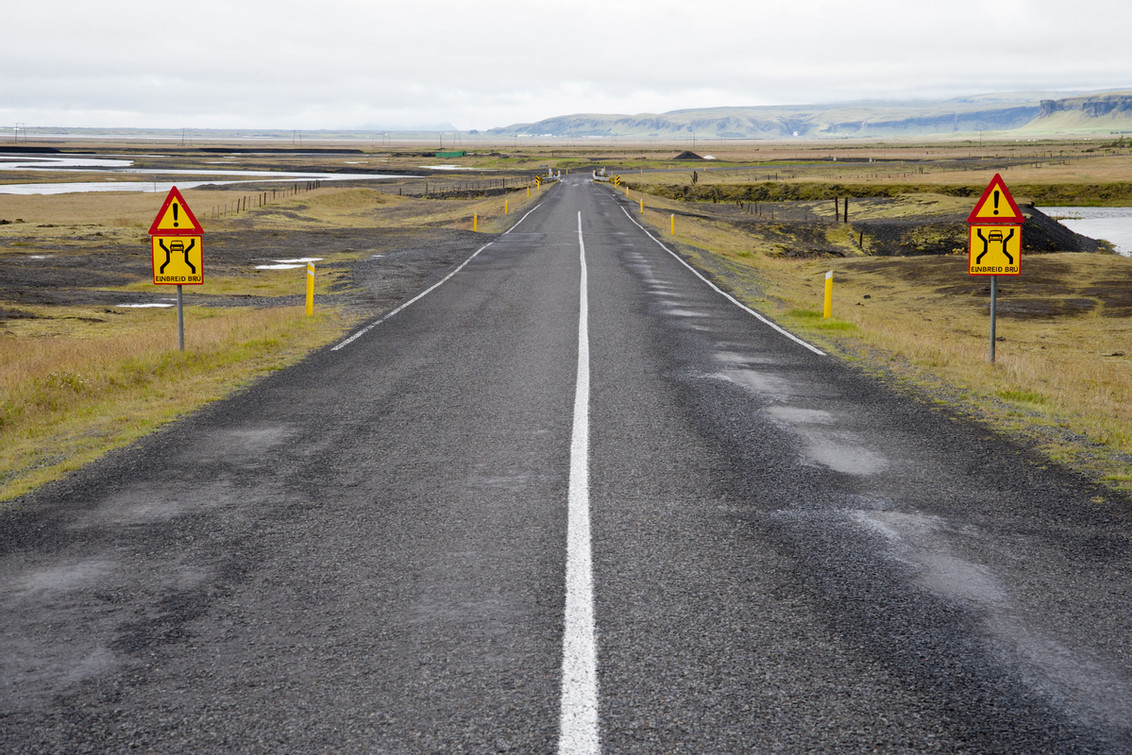
When approaching a single-lane bridge or a single-lane tunnel, keep in mind that the person who is closest has the right of way. If you want to play it safe, pull over and let the other driver pass before continuing on your way.
Hills or curves in the road where you can't see oncoming traffic represent a very real risk for collision or impact. The Iceland driving side of the road is on the right. When approaching a hill or a curve with a blind spot, slow down and pull over to your right as you get closer.
Wind and Sandstorms
The wind in Iceland is no joke—it can shake your camper like a leaf in a storm and even take your door right off if you’re not careful when opening it. Always check wind forecasts before setting out, and when parking, position your camper so the wind isn’t pushing directly against your door. And then there’s the sand.
If you’re traveling through the southern regions, strong winds can whip up sand and ash, potentially damaging your vehicle. At Campervan Iceland we offer sand and ash protection insurance—highly recommended unless you want to return your RV looking like it survived a volcanic eruption.
River Crossings and Gravel Roads
If you’re venturing onto Iceland’s famous F-Roads, be prepared for some serious terrain. Many of these roads require crossing unbridged rivers—yes, actual rivers. Before attempting a crossing, watch how deep the water is and, if in doubt, wait for another driver to go first (and hopefully not float away). If you have no experience doing this, then choose an alternative route. Insurance do not cover damages caused by water!
Gravel roads, on the other hand, can be deceptively tricky. Drive slower than usual to avoid skidding, and keep a safe distance from other vehicles to avoid windshield damage from flying stones.

The Iceland gas station phenomenon
Our last tip for Iceland driving safety is to plan your gas station stops in advance. This doesn't fall under the umbrella of traditional safe driving advice, but it's extremely important. Densely populated areas can be few and far between. If you're driving through one of the country’s rural areas, you just might find yourself dozens or hundreds of kilometers or miles from the closest service station.
Running out of gas and getting stuck while you're traveling is an absolute nightmare. So fill up your gas tank early and often and get an idea of where you plan on topping up.
Staying Updated
The best way to avoid this type of situation is to constantly check the weather forecast on the days when you plan on driving.
Websites and Apps for Road Conditions
Staying informed is key to a smooth and safe trip. The Icelandic Road and Coastal Administration’s website provides up-to-date road conditions, closures, and weather warnings. Another great resource is SafeTravel.is, which offers real-time alerts and safety tips. Downloading an offline map app like Maps.me or Google Maps with saved routes is also a smart move.

Emergency Contacts and Road Assistance
If you find yourself in a sticky situation, dial 112—the Icelandic emergency number. It’s also a good idea to have the contact information for your camper rental company on hand, just in case you need roadside assistance. Many rental companies offer 24/7 support, so you won’t be left stranded in the middle of nowhere (unless, of course, that’s your idea of adventure).
By keeping these tips in mind, you’ll be well-prepared to navigate Iceland’s roads safely and confidently. So buckle up, enjoy the ride, and let the adventure begin!
Top 10 recommendations for a safe trip in Iceland
So, in a nutshell:
- Check the weather and road conditions daily – Icelandic weather changes fast, and roads can close unexpectedly. Use Umferdin and SafeTravel.is to stay updated.
- Rent the right vehicle for your trip – If you plan to explore the Highlands or F-Roads, a 4x4 camper or RV is a must. Regular roads are fine for standard campers.
- Watch out for the wind – Strong gusts can slam doors open or even rip them off! Hold onto your doors tightly when exiting your vehicle.
- Drive with headlights on at all times – It’s the law, even during daylight. It helps with visibility, especially in foggy or snowy conditions.
- Be cautious on gravel roads – Slow down to avoid skidding, and keep a safe distance from other vehicles to prevent windshield damage from flying rocks.
- Never stop in the middle of the road for photos – Iceland’s scenic roads are tempting, but always pull over safely in designated areas.
- Plan your fuel stops – Gas stations can be far apart, especially in remote areas. Always keep your tank at least half full.
- Respect nature – no off-road driving – Iceland’s landscape is fragile. Driving off marked roads is illegal and carries hefty fines.
- Pack for all seasons – Even in summer, temperatures can drop fast. Bring warm layers, waterproof gear, and sturdy shoes.
- Save emergency contacts – Dial 112 for emergencies, and keep your camper rental company's roadside assistance number handy.

Driving safely in Iceland
Driving around Iceland presents many different types of surfaces, weather conditions, and driving challenges. Hopefully, being prepared for what to do in these situations will help you be a safer driver. Armed with your newfound knowledge of what it's like to drive in Iceland, you're ready for a safe, fun, happy adventure.


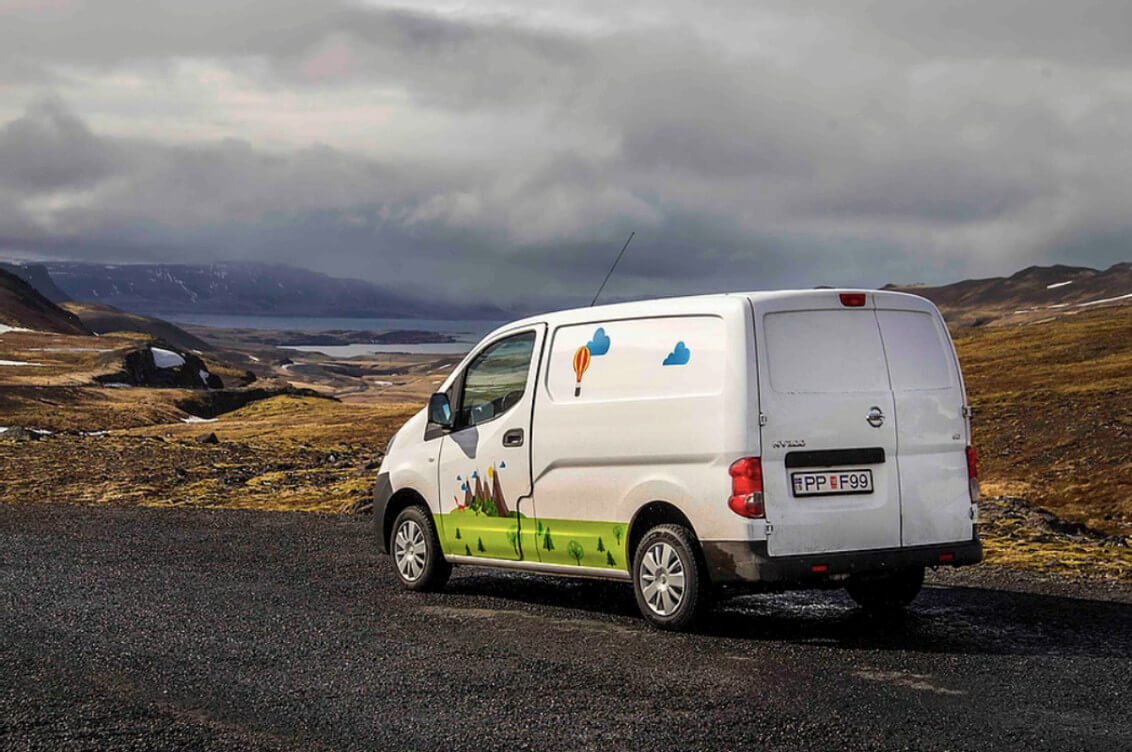
 By
By 


